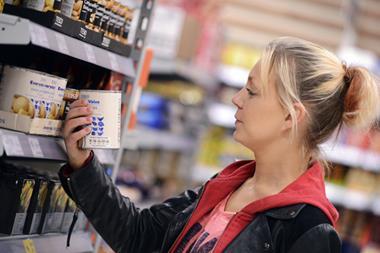Can grocery shoppers be influenced by aspects of their surroundings they are unaware of? Recent findings from neuroscience suggest they can and are. During any given second, we are consciously aware of only about 16 of the 11 million bits of information passed to our brain by our senses. This means the conscious mind receives far less information than the subconscious.
And subconscious ‘hidden persuaders’ exert a powerful influence over everything from what they buy and the length of time they shop to how highly they rate the experience.
Background music, for example, affects purchasing decisions even when customers are unaware of what is being played. In one study, wine buyers heard either classical music or tunes from the current Top 40. Although none paid conscious attention to it, those exposed to the classics spent significantly more money. They bought not more wine, but higher-priced wines.
“Subconscious persuaders exert a powerful influence over everything”
Colour also exerts a hidden influence. When researchers from Arizona State University and Kansas University compared sales in two stores, one predominantly red and one blue, they found that in the blue environment consumers bought more, made buying decisions more rapidly and browsed for longer than in the red store. None, when questioned, made any mention of the colour scheme.
While the use of newly baked bread to stimulate sales is widely known, aromas also play a far more significant role in influencing shoppers than many realise. Because our sense of smell is wired directly into the brain, even a few molecules of aroma can evoke subconscious memories and trigger a desire to spend.
Belgian researchers, for instance, have found the smell of chocolate infused into book shops increases the purchase of certain titles - even when the customers were unaware of the aroma. In the UK, McCain used multisensory bus shelter ads to promote its microwave baked potato range. These consisted of a two foot-wide fibreglass jacket potato, which people could push to activate heaters. As these came on, the scent of freshly baked potatoes was released into the air. Given the February start date, these got a lot of use and sold a lot of baked potatoes.
At Bloomingdale’s in the US, shoppers encounter the soft scent of baby powder in the infant department, the tropical scent of coconut in the swimsuit department and lilac in the lingerie department. During festive periods, the aromas of sugar, biscuits, chocolate and evergreen are used. All are reported as having a positive effect on both sales and customer satisfaction.
One of the reasons aromas have such a powerful impact on our emotions and behaviour is that olfaction is the only one of our senses wired directly into the brain, which is why even a whiff of stale cabbage or antiseptic can transport people straight back to the school canteen or a childhood hospital visit.
It’s also why retailers should never ignore the power of smell or the other hidden persuaders to trigger a powerful buying desire in consumers.
Dr David Lewis is author of The Brain Sell: When Science Meets Shopping















No comments yet